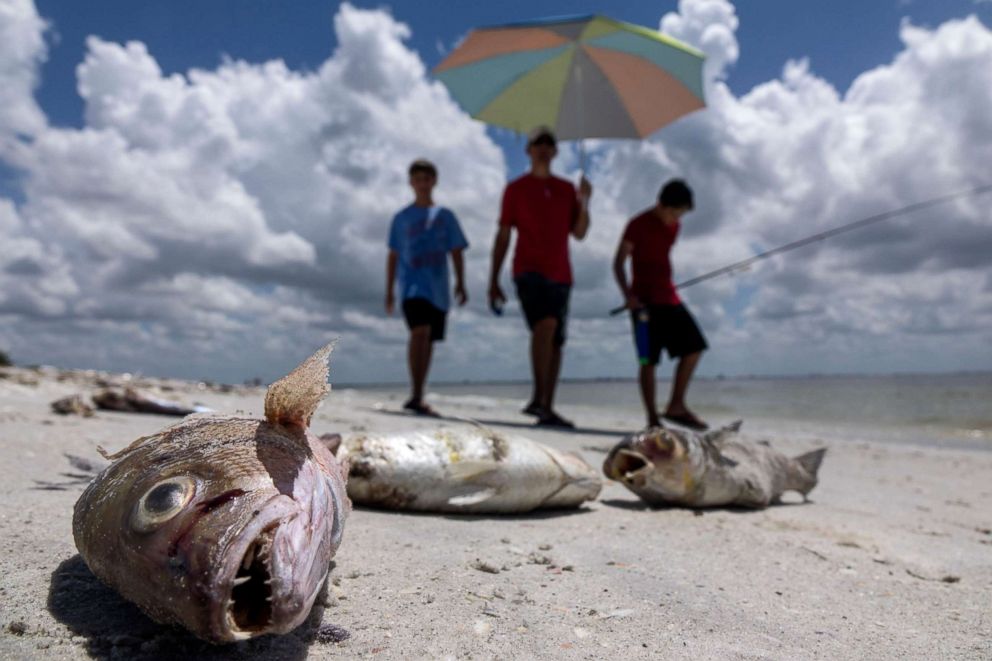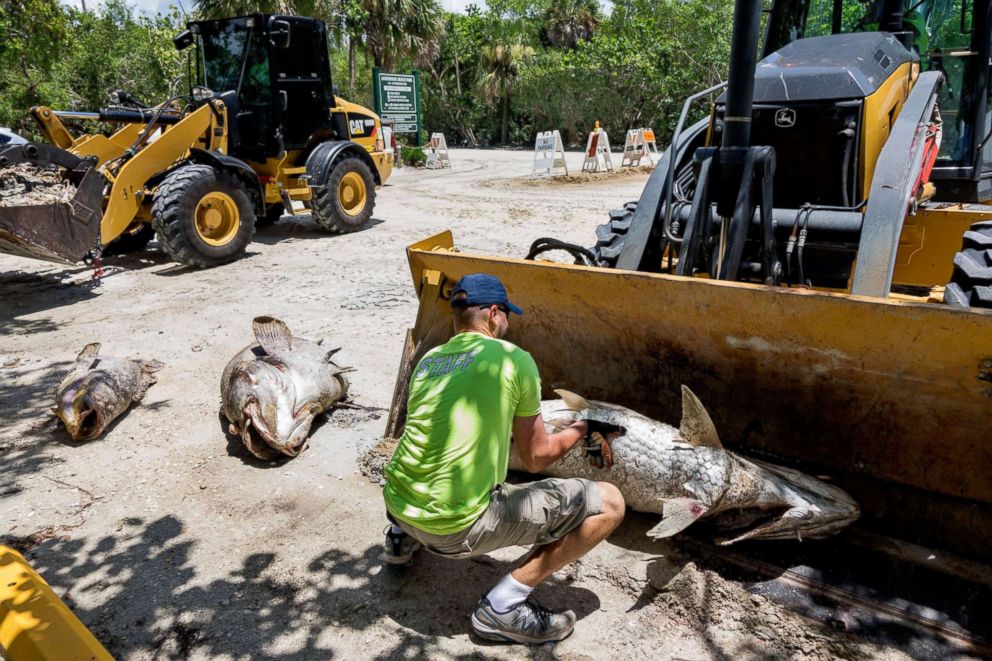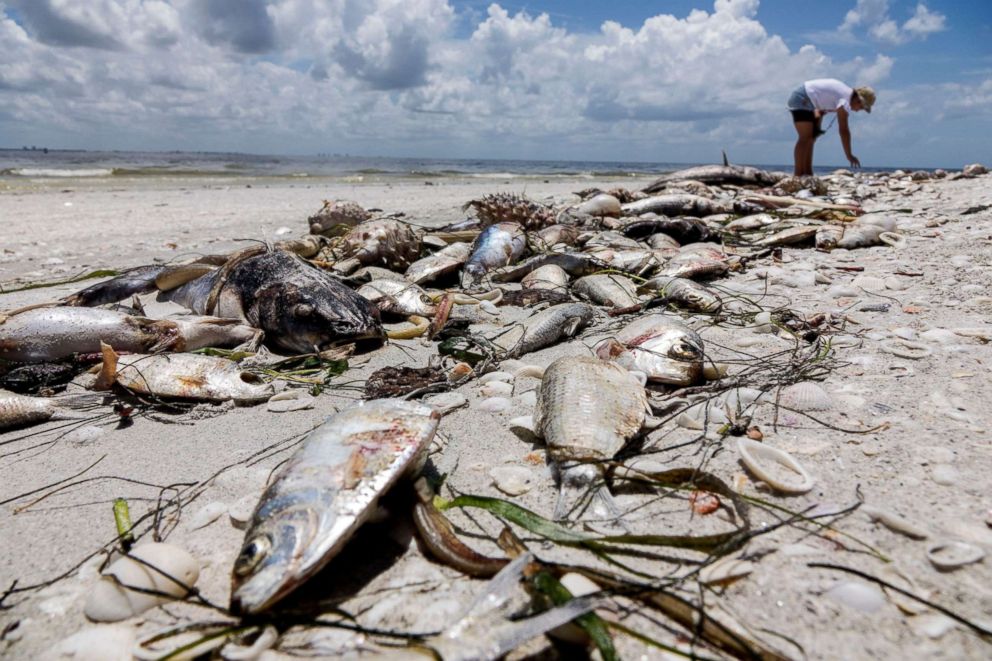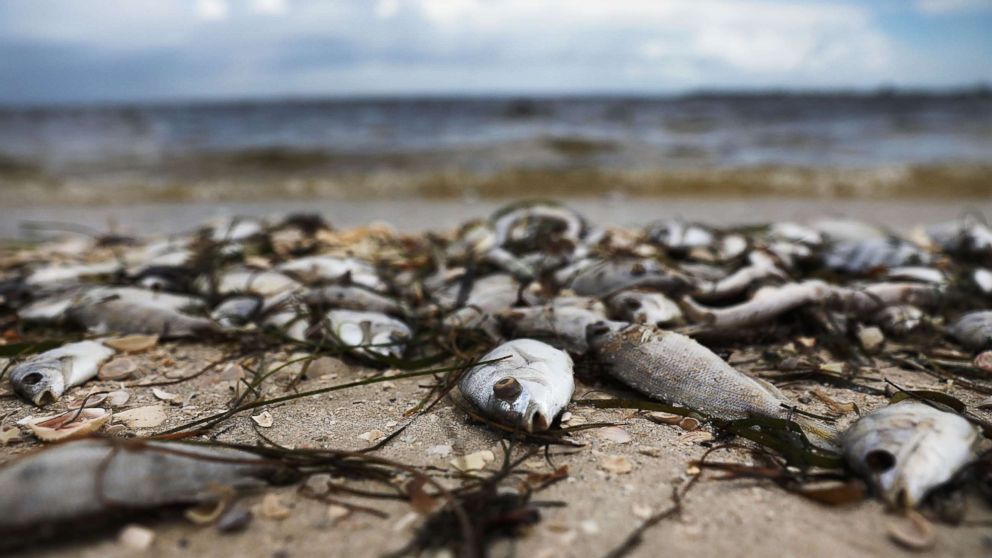How to stay safe around red tide
Florida's Gulf Coast is battling the worst red tide in more than 10 years, pushing Gov. Rick Scott to declare a state of emergency this week. But all over the world, red tides that grow out of control, kill fish, and take all of the oxygen from coastal waters are lasting longer and longer.
Scientists say Florida's latest red tide actually began in November 2017 is now covering more than 150 miles from Anna Maria Island to Naples Florida. The red tide originated in the Gulf of Mexico between 10 and 40 miles offshore and was then transported by wind and currents.
Since then, it's been killing off marine life and posing a toxic threat to humans as well. Here's what you need to know.
What is a red tide?
Red tide is a natural phenomenon that has been reported since the mid-1800s, according to the Florida Fish and Wildlife Commission. Algae blooms can be beneficial or harmful, and red tides are in the harmful category.

Microscopic algae, a plant-like organism, is vitally important to our marine ecosystem, except when it grows in higher-than-normal concentrations and becomes an algae bloom. Algae blooms vary in color and can be purple, blue, or green, but a red tide means the organism Karenia brevis is taking over. K. brevis thrives in salt water.
Why are the red tides red?
High enough concentrations of K. brevis algae can discolor water to a coppery, red-brown color. At some points during the day, it can also look blue-green.
What makes a red tide harmful?
Karenia brevis releases brevetoxins; those harm the nervous system of the shellfish that feed on algae.
According to the Florida Wildlife Commission, the blooms not only discolor seawater and produce toxins, they can sicken or even kill fish, seabirds, turtles, and marine mammals, such as manatees. These toxins can also harm people and their pets.
When walking along the beach, look out for signs that warn about red tide in the area.
How do red tides hurt humans?
The Florida Department of Health advises people to use caution when in areas that have high concentrations of red tide algae.
People who swim in K. brevis-infested algae may experience irritation of the eyes, nose, and throat. They may also find themselves wheezing, coughing, and experiencing shortness of breath.

Bob Weisberg, a professor of physical oceanography at the University of South Florida’s College of Marine Science, told ABC News that in humans, the harmful algae bloom can cause respiratory irritation, but it is usually temporary. If people suffer from severe or chronic respiratory conditions, such as asthma or chronic lung disease, it can be more serious.
The Center of Disease Control also released a statement about red tide, warning that brevetoxins can become concentrated in the tissues of shellfish that feed on the algae.
People who then eat this shellfish may experience neurotoxic shellfish poisoning, a food poisoning that can be associated with severe stomach problems as well as tingling in fingers and toes.
Pets may experience similar health problems if exposed to red tide. The Florida Wildlife Commission, of course, recommends that both people and pets avoid swimming in red tide.
Experts also say that beachgoers should wear shoes to prevent being cut by fish bones. People should also avoid coming into contact with dying or dead marine life as the toxin is already present in their bodies.
What should you do if you are exposed to red tide?
If swimmers do get caught in red tide, they should make sure to rinse thoroughly with fresh water. Rinse off pets who are exposed to red tide waters as well.

Avoid swimming near dead fish or animals, as this is an indication that there is an increased amount of toxin in the area.
The Florida Department of Health also recommends wearing a particle filter mask to lessen the effects of red tide toxins in the air. For coughing, sneezing and watery eyes caused by red tide toxin, using antihistamines may help.
Although the effects of the red tide toxins are known to be temporary, if symptoms do not go away or continue to worsen, people should go to the nearest hospital.
The bottom line, according to the Environmental Protection Agency: "Algal blooms can be toxic. Keep people and pets away from water that is green, scummy or smells bad."
Dr. Aditi Vyas is a resident in the ABC News Medical Unit specializing in radiology and occupational and environmental medicine.




